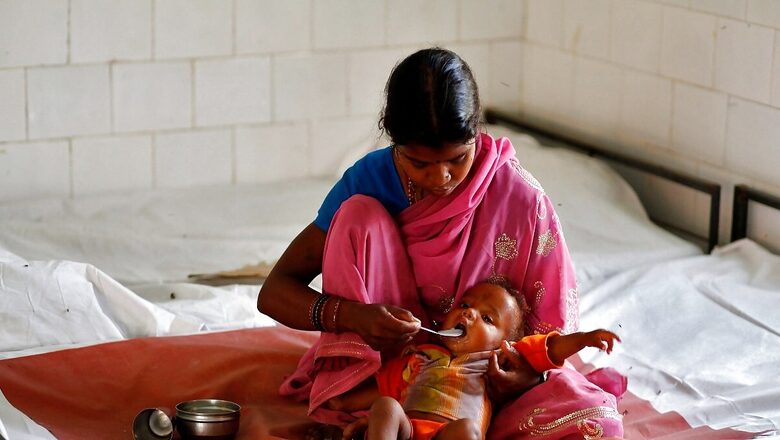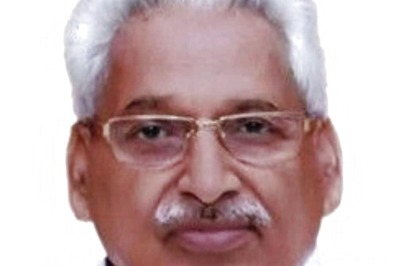
views
“Nutrition is not just a science; it’s a social movement, and it’s up to the people of India to own it” – Hon’ble PM Narendra Modi
India’s growth story is both fascinating and puzzling. On one hand, the country has achieved tremendous economic growth. Despite its many advantages, the community continues to struggle with ongoing nutritional issues that seem to remain. Recent data from the Global Nutrition Report reveal that India is home to over a third of the world’s malnourished children, a stark reminder of the scale of our challenge. It’s a paradox that needs to be closely examined and addressed. Despite substantial progress, the spectre of malnutrition looms large, particularly affecting our most vulnerable populations: children and women. We’re battling on multiple fronts, from policy tables to community kitchens, yet the fight is far from over.
India has pursued nutritional security through ambitious policy initiatives spanning decades. Programmes that provide nutritional support to children and women have laid the groundwork for a healthier future. Yet the challenge persists, complex and multifaceted, intertwined with poverty, education, and access to healthcare. Despite improvements, undernutrition and micronutrient deficiencies continue to impair the growth and development of millions of Indian children, casting long shadows over their futures.
Malnutrition isn’t merely a health crisis; it’s an economic one, diminishing cognitive and physical capabilities and, thus, the potential for learning, earning, and contributing to society. The cost of inaction is high, not just in human terms but in the loss of national productivity and progress. As we stand on the brink of 2024, eradicating malnutrition within the next decade is ambitious but imperative. It’s a goal demanding more than just policy intervention; it requires a national movement. The Covid-19 pandemic has exacerbated the nutritional crisis, with lockdowns disrupting food supply chains and access to school meal programs. This calls for urgent adaptive strategies to ensure that nutritional support reaches those in need, even in times of crisis.
This mission aligns with the broader national imperative: to weave nutrition into the fabric of our development narrative. It’s about ensuring food security and nurturing a culture of nutritional awareness and healthy practices that can sustain future generations, which may require a concerted effort to strengthen policy frameworks, enhance implementation mechanisms, and, most importantly, mobilise community engagement. Empowering communities to take charge of their nutritional well-being is critical. After all, real change begins at the grassroots level, in the choices made within homes and local communities.
There is a need to focus on school health and nutrition in a mission mode, aligned with the overarching visions of the National Health Policy 2017 and the National Education Policy 2020, which may weave together health and education, creating a holistic framework for the development of children. This integration is crucial, acknowledging the undeniable link between physical health and academic performance.
For the long-term sustainability of such a mission, securing ongoing funding and resources will be crucial, which includes synergising with existing initiatives like “Padhe Bharat, Badhe Bharat,” “Palan” and “Vatsalya” for a seamless care continuum, especially targeting early childhood development.
The high prevalence of malnutrition among school-going children in India is a concern, influenced by various factors, including dietary intake, socioeconomic status, and access to healthcare. Malnutrition among children in India manifests in several forms, including stunting (low height for age), wasting (low weight for height), and underweight (low weight for age), with micronutrient deficiencies also being common.
Efforts to combat malnutrition in India have included government initiatives like the Midday Meal Scheme, which aims to provide nutritious meals to children in schools to improve their nutritional status and encourage school attendance. Innovations like fortified rice distribution in school meals and the use of AI to monitor crop nutrition levels are making strides towards addressing malnutrition. Such technologies improve food quality and ensure that interventions are precisely targeted. Despite these efforts, challenges remain due to issues such as food security, quality of dietary intake, and the need for comprehensive public health approaches to address the determinants of malnutrition.
The NFHS-5 findings related to nutrition among school-going children highlight slight improvements in child nutrition indicators at the national level. The survey observed a decrease in the prevalence of stunting (low height for age), wasting (low weight for height), and underweight (low weight for age) among children under five years old. Specifically, stunting declined from 38 per cent to 36 per cent, wasting from 21 per cent to 19 per cent, and underweight from 36 per cent to 32 per cent at the all-India level. Despite these marginal improvements, the change is not considered significant due to the short span between surveys, indicating that drastic changes in these indicators are unlikely in a brief period.
However, the survey also brought to light the persisting challenge of anaemia among children and women, with more than half being anaemic at the all-India level and across all phase-II states/UTs compared to NFHS-4, despite a substantial increase in the consumption of iron folic acid (IFA) tablets by pregnant women for 180 days or more.
These findings underscore the need for targeted interventions to address nutritional deficiencies and improve the health outcomes of school-going children in India. The slight improvements in nutrition indicators suggest progress. Yet, the continued high prevalence of anaemia emphasises the importance of sustained and focused efforts to combat malnutrition and its associated health risks.
To win this fight, we must prioritise nutrition, strengthen policies and tighten implementation, empower communities, and lead by example. This decisive decade demands bold action. Investing in the nutritional health of our children is the most powerful investment in our future. Governments must prioritise funding and policy support for dietary programs. The private sector can innovate in nutritious food production, while civil society and NGOs can play a crucial role in education and program delivery. Individuals can contribute by volunteering and advocating within their communities.
One major hurdle is the delivery of nutritional services in remote areas. Mobile health units and digital platforms offer promising solutions, bridging the gap between communities and essential dietary support. Malnutrition robs children of their potential, hindering their cognitive abilities and physical development. It’s both a moral imperative and a sound economic strategy.
Dr K Madan Gopal works as an Advisor at the Public Health Administration, National Health Systems Resource Center, MoHFW GOI, and a former Senior Consultant at NITI Aayog GOI; Archana Sinha, Founder & CEO of the Nourishing Schools Foundation, Dr K S Uplabdh Gopal is a healthcare consultant. Views expressed in the above piece are personal and solely that of the author. They do not necessarily reflect News18’s views.


















Comments
0 comment